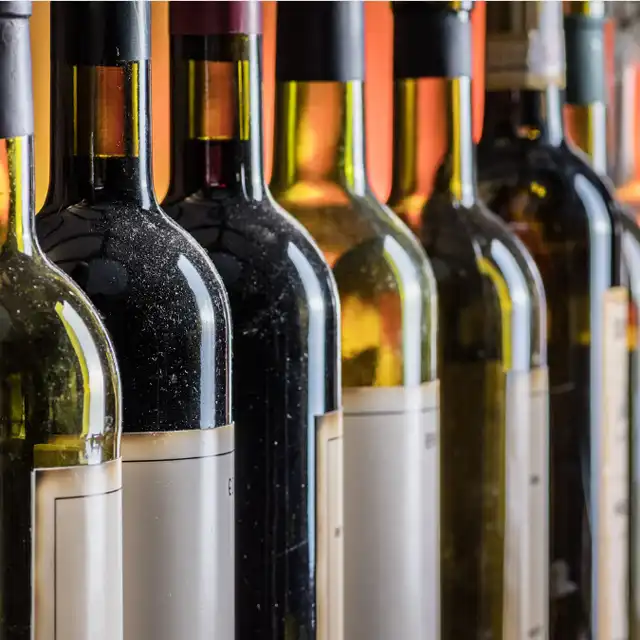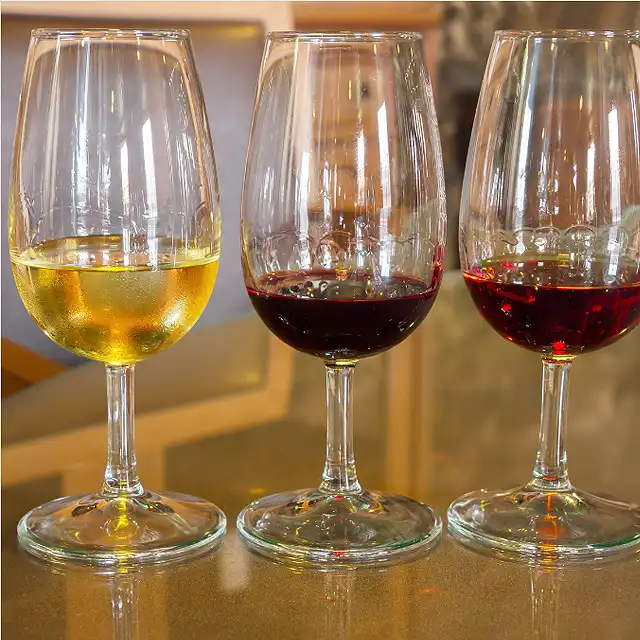In the world of the Plant Paradox, finding out that you can still enjoy wine is definitely cause for excitement. However, before you start uncorking bottles left and right, it’s important to understand that not all wines are created equal. While certain polyphenol-rich wines can be beneficial for your health, moderation is key. So, if you choose to indulge in wine after phase one, it’s essential to know which ones to enjoy and which ones to avoid. And remember, drinking wine is not a requirement of the Plant Paradox plan. It’s just one option among many, and if you decide to drink, it’s recommended to stick to a single six-ounce glass per day. Now, let’s dive into the world of wines and discover which ones are the best fit for the Plant Paradox lifestyle.

Benefits of Drinking Wine on the Plant Paradox
Drinking wine on the Plant Paradox plan can be an exciting addition to your health journey. While not required, enjoying wine in moderation can provide certain benefits. However, it’s important to understand that not all wines are created equal and some may not align with the principles of the Plant Paradox. Before indulging in wine, it’s important to consult with your doctor and choose the right wine that suits your preferences and dietary needs.
Moderation is Key
When incorporating wine into the Plant Paradox plan, it’s crucial to remember that moderation is key. While wine can have health benefits, it should not be consumed in excess. Dr. Gundry recommends enjoying a single six-ounce glass of wine per day. This moderate consumption allows you to savor the flavors and enjoy the benefits of wine without overdoing it.
Not Required to Drink Wine
It’s essential to note that drinking wine is not a requirement of the Plant Paradox plan. If you choose not to consume alcohol or if you do not typically drink wine, that is a valid and healthy choice. It’s always important to listen to your body and make decisions based on what feels right for you. If you have any concerns or questions about including wine in your diet, it’s best to consult with your doctor before making any changes.
Consulting with a Doctor
Before incorporating wine into your Plant Paradox plan, it’s wise to consult with your doctor. They can assess your specific health needs and advise if drinking wine is suitable for you. Your doctor can provide personalized recommendations and address any concerns or questions you may have. It’s important to have a professional opinion when making decisions about your health.
Choosing the Right Wine
When selecting wine to enjoy on the Plant Paradox plan, there are certain factors to consider. Eliminating sweet and fortified wines is essential, as they tend to be higher in sugar content. Dessert wines and fortified wines such as sherry, port, and Madeira should be avoided. These wines counteract the health benefits and do not align with the principles of the Plant Paradox.

Eliminating Sweet and Fortified Wines
Sweet wines, such as Moscato, Lambrusco, vin santo, and sauternes, should be avoided due to their higher sugar content. These wines may be enjoyable but do not provide the same health benefits as other wines. Similarly, fortified wines such as sherry, port, and Madeira should be skipped. These wines are often sweeter and have higher alcohol content, making them less suitable for the Plant Paradox plan.
Considering Red Wine over White Wine
When it comes to choosing between red and white wine, red wine takes the spotlight on the Plant Paradox plan. Red wine contains a higher concentration of polyphenols, which are beneficial plant compounds. These polyphenols give wine its color and contribute to its health benefits. In contrast, white wine has a lower polyphenol content, making it less advantageous for the Plant Paradox plan.
Polyphenol Content in Red Wine
Polyphenols have been linked to numerous health benefits. They have antioxidant and anti-inflammatory properties, which can support overall health. Red wine, rich in polyphenols, offers these potential benefits. The polyphenols present in red wine are known for their ability to protect against cellular damage and promote heart health.
Exception to the Rule
While red wine is generally preferred on the Plant Paradox plan, there is an exception for dry sparkling wines. Dry sparkling wines, such as champagne, can be enjoyed as an exception to the red wine rule. These wines should be true sparkling wines made in the style of champagne. Instead of CO2 pumped in to create bubbles, they undergo a double fermentation process. This method produces tiny bubbles and a signature fizz, resulting in a unique drinking experience.
The Importance of High-Altitude Wines
The place where grapes are grown can significantly impact their nutritional content. High-altitude grapes, grown closer to the sun, develop robust systems to protect themselves from sun damage. These grapes contain an abundance of polyphenols, the same health-boosting compounds found in red wine. Choosing high-altitude wines ensures that you’re getting the maximum nutritional benefits from the grapes used to make the wine.
Nutritional Content of High-Altitude Grapes
High-altitude grapes, due to their exposure to the sun, have a higher concentration of polyphenols. These polyphenols protect the grapes from oxidative damage caused by the sun’s rays. When the grapes are used to make wine, the beneficial polyphenols are transferred to the final product. This means that high-altitude wines offer more health benefits compared to wines made from grapes grown at lower altitudes.

Identifying High-Altitude Wines
Identifying high-altitude wines can be done through careful label reading. Some wines explicitly state “high altitude” on the label, making it easier to identify them. If the label does not mention high altitude, certain regions are known for producing high-altitude wines. Look for red wines from the Mendoza region of Argentina, parts of northern Italy near the Italian border, Swiss wines, some Austrian wines, and wines from the Mapo Valley in Chile. These regions typically produce high-altitude wines with robust nutritional profiles.
Affordable High-Altitude Wines to Try
Contrary to popular belief, high-altitude wines do not always come with high price tags. There are affordable options available that provide excellent quality and taste. In Argentina, where wine production is cost-effective, you can find reasonably priced high-altitude wines. Additionally, parts of northern Italy near the Italian-Swiss border and the Mapo Valley in Chile produce high-altitude wines that are accessible and budget-friendly. These wines offer a great opportunity to experience the benefits of high-altitude grapes without breaking the bank.
Exception to Red Wine: Dry Sparkling Wines
If you prefer to make an exception to the red wine rule, dry sparkling wines can be a great alternative. Dry sparkling wines, made in the style of champagne, undergo a double fermentation process. This process results in tiny bubbles and the signature fizz associated with true sparkling wine. Dry sparkling wines can include true champagne made in the Champagne region of France, Cava made in Spain, Prosecco made in Italy, or sparkling wine produced using the traditional method. It’s essential to check the label for keywords such as “method Shemp” or “method tradition” to ensure that you are selecting the right type of sparkling wine.

Double Fermented Sparkling Wines
Double fermented sparkling wines are made with the traditional method, where CO2 is not pumped in to create bubbles. Instead, the wine undergoes a secondary fermentation process that naturally produces carbonation. This process delivers fine bubbles and enhances the overall taste and texture of the wine. By selecting double fermented sparkling wines, you can enjoy the indulgence of sparkling wine while still adhering to the guidelines of the Plant Paradox plan.
Determining the Right Type of Sparkling Wine
When choosing a dry sparkling wine, it’s essential to determine the right type that fits your preferences. Whether you opt for true champagne, Spanish Cava, Italian Prosecco, or another type of sparkling wine, make sure it aligns with the guidelines of the Plant Paradox plan. Look for keywords on the label such as “method tradition,” “method Shemp,” or “traditional method” to ensure that you are getting a low-sugar and high-quality sparkling wine.
Conclusion
Incorporating wine into the Plant Paradox plan can add a touch of indulgence to your health journey. It’s crucial to remember to drink wine in moderation and choose the right types of wine. Avoiding sweet and fortified wines, opting for red wine over white, and considering high-altitude wines can maximize the health benefits of wine while aligning with the principles of the Plant Paradox. By following these guidelines and consulting with your doctor, you can enjoy wine responsibly and toast to your health. Remember to savor each sip, and always prioritize your well-being.